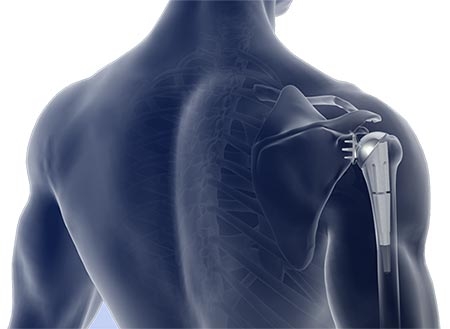Like any other orthopedic implant, shoulder replacement implants are manufactured by a handful of companies. My preference is to utilize Exactech implants for a variety of reasons. Their system allows a CT scan to be uploaded to planning software. Once uploaded, I can pre-plan where the components will be placed intra-operatively. This plan comes into the operating room with me. Trackers are then placed on the shoulder blade during the surgery, and I can navigate the socket component for highly accurate (2mm/2 degrees) implant placement. Early data (2 yrs) suggests this accurate placement is improving outcomes.
Exactech is running a large-scale prospective and retrospective study evaluating shoulder replacement outcomes long-term. I am participating in this research, which now has over 17,000 implants enrolled. The scale of the study has allowed countless publications to further advance surgical technique and clinical decision-making in the realm of shoulder arthroplasty.
The data from this study has been compiled to create an artificial intelligence software that can be used to predict a patient’s outcome based on their specific demographics, comorbidities, subjective pain and function level, and objective measurements. Once this information is entered into the software, a prediction will generate indicating how a patient will feel, move, and function over time following replacement. This software also allows patient-specific predictions to be generated for both anatomic and reverse shoulder replacement, which can then be compared side-by-side.
In addition to generating an outcome prediction, the software will also create a risk profile for the patient based on current literature. It provides percentages for various complications both early in the recovery as well as beyond two years. It includes risks such as infection, implant loosening, rotator cuff tearing, instability, and fracture.
This predictive software allows a more patient-specific conversation to take place prior to surgery. It gives patients an idea as to the outcome they are likely to experience before they consent to proceed with elective surgical intervention. I have also found it helpful when trying to decide whether to proceed with an anatomic implant or reverse implant for patients who are candidates for both.
I have found the capabilities of this software to further facilitate pre-operative discussion. It provides the patient a better understanding of what to expect with surgical intervention and gives them the opportunity to be part of the decision-making process.




